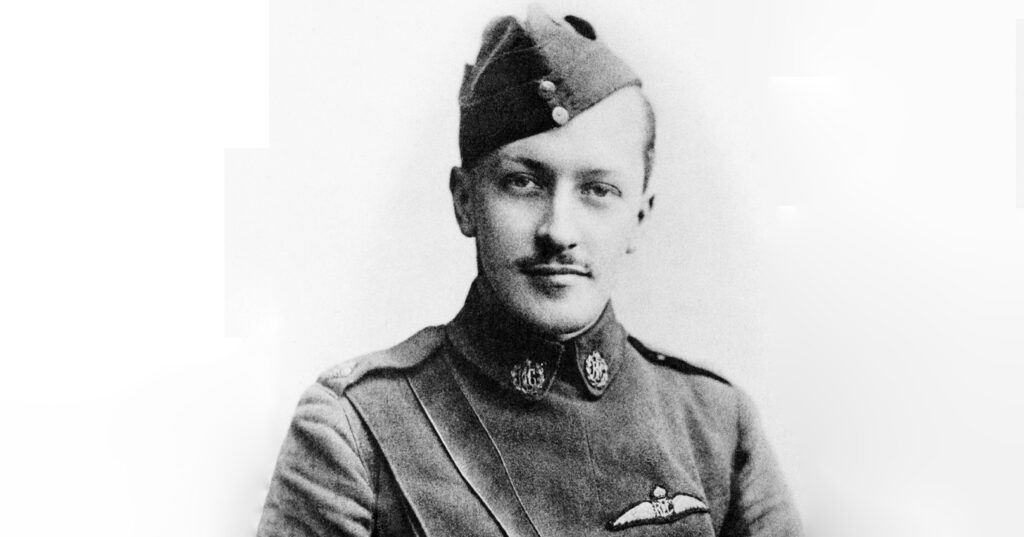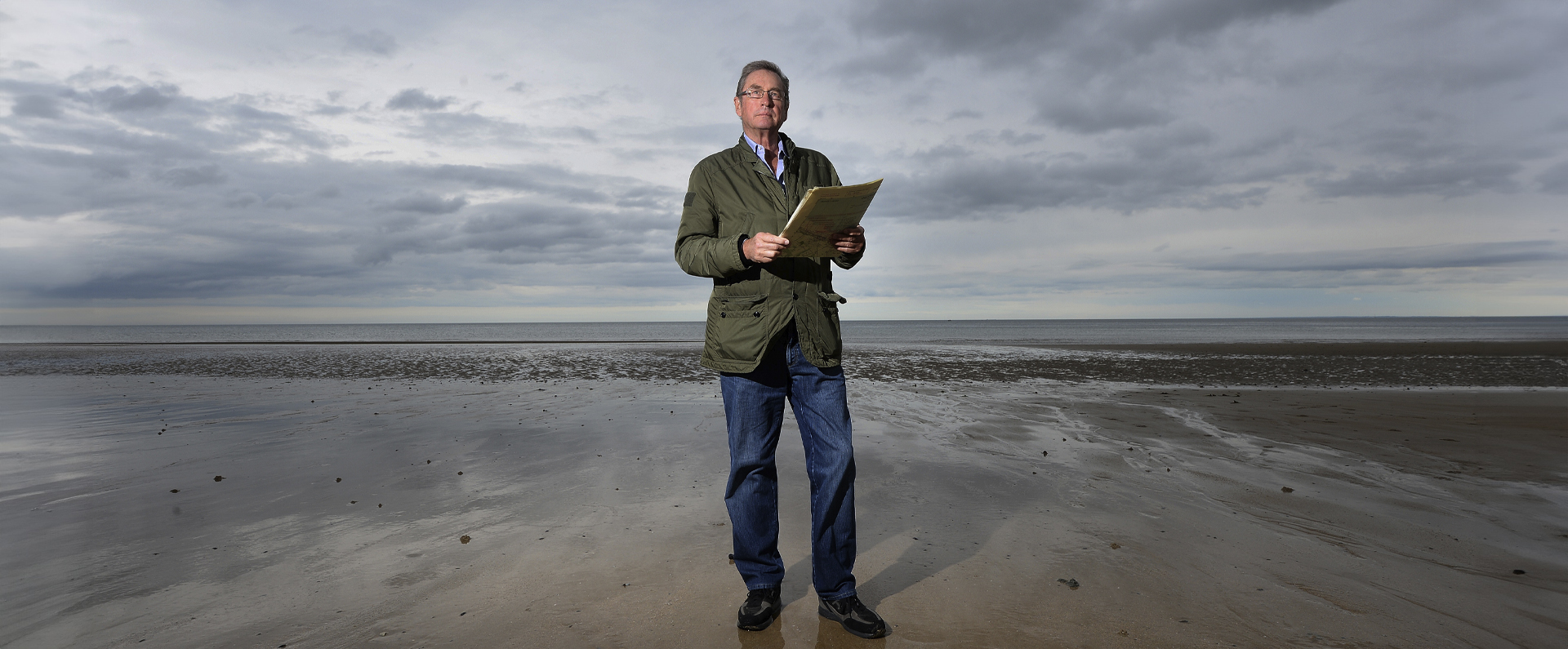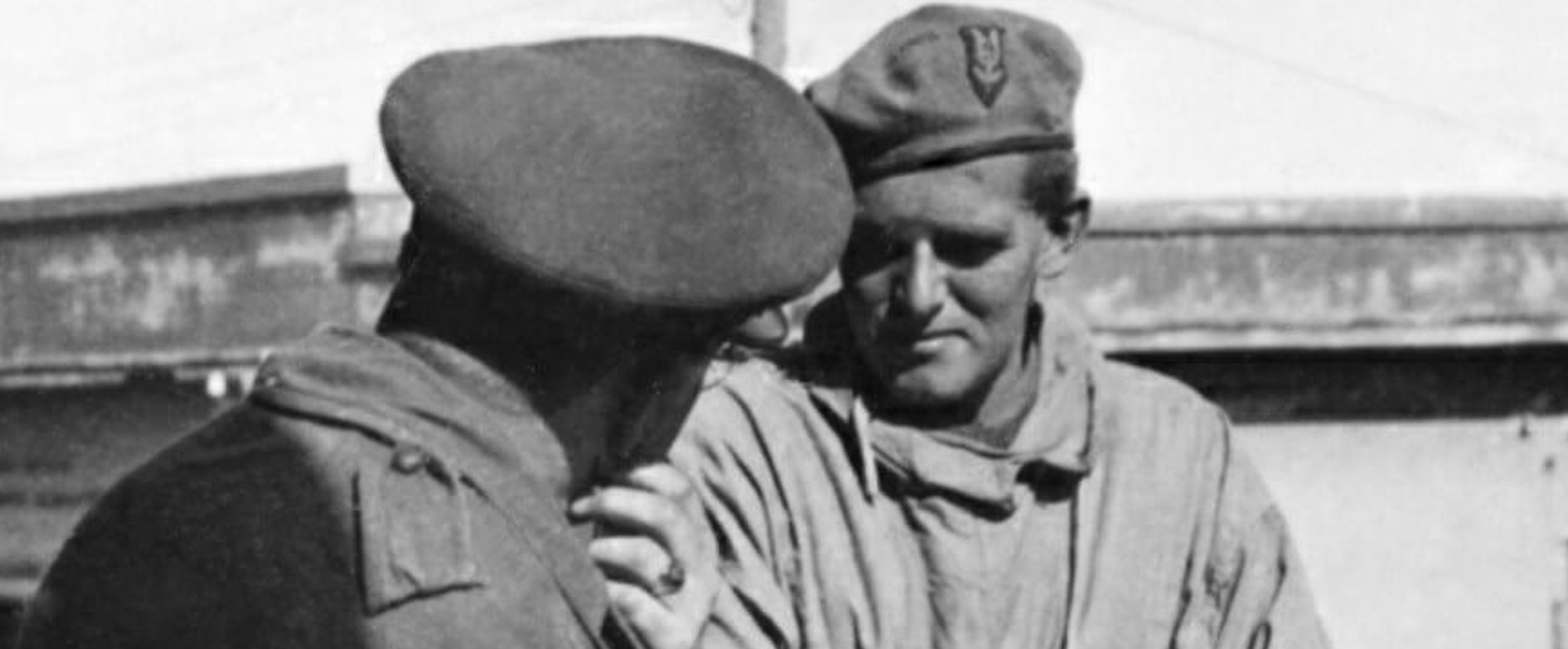
Published in the Daily Express on 27 April 2015.
Lieutenant William Barnard Rhodes-Moorhouse
Courage comes in many forms but for a supreme example of selfless bravery look no further than the actions of William Rhodes-Moorhouse.
He was one of the pioneering pilots at a time when even flying aeroplanes for recreation was highly dangerous.
Indeed the First World War broke out only 11 years after man’s fi rst powered flight by the Wright brothers in 1903.
By 1914 aircraft had suffi ciently come of age to play an important role in the war. Yet the early military aircraft were slow, cumbersome and equipped with only the most primitive weapons. Extraordinary as it may seem, when hostilities began, most small bombs were actually dropped from the cockpit by hand.
The life expectancy of these early pilots was short and courage was needed even to clamber into an aircraft’s cockpit, let alone to perform the acts of dramatic gallantry that were repeatedly displayed in the skies from 1914-1918.
William Barnard Rhodes-Moorhouse was born in London on September 26, 1887, into a family of great adventurers . His parents were wealthy New Zealanders who had moved to Britain to raise a family.
He was educated at Harrow and Trinity College, Cambridge but there he neglected his studies for his love of engineering and passion for racing motorcycles and cars.
By the time he was in his early 20s Rhodes-Moorhouse was fascinated by the new sport of fl ying. He paid for flying lessons and became a pioneer airman, flying in the UK and the US. He ended his peacetime career with a record-breaking cross-Channel flight in 1912, shortly after he got married.
When war was declared he volunteered for the Royal Flying Corps (RFC) even though he had not fl own for two and a half years. With a shortage of experienced pilots on the Western Front Rhodes-Moorhouse was posted to 2 Squadron at Merville, France on March 21, 1915. His squadron fl ew the Blériot-Experimental (BE) 2a and 2b aircraft, sturdy machines but with a top speed of just 70mph.
From April Rhodes- Moorhouse, a second lieutenant, was performing numerous highly dangerous missions and his skill and courage did not go unnoticed by senior officers.
On April 26, 1915 the RFC was ordered to bomb the enemy’s railway network to prevent reinforcements reaching the front lines.
He was instructed to bomb the strategically vital railway junction at Courtrai, Belgium – one of three targets for just four aircraft. HE TOOK off alone from Merville at 3.05pm, having been asked to release his 100lb bomb from just below cloud level. However, after making the 35-mile fl ight he dropped right down to 300ft to ensure a direct hit.
A volley of machine gun fire greeted him and when he was directly over the target a burst of fire perforated his aircraft and smashed into his thigh. At the same time fragments from his own bomb ripped through the wings and tailplane.
Rhodes-Moorhouse, by now seriously wounded, had two options: land behind enemy lines, surrender his aircraft, receive medical attention and become a prisoner of war or try to limp back to base and pass on the intelligence . Choosing the latter option, he dropped a further 200ft to gain some extra speed and again encountered heavy fire from the ground. This led to two new wounds to his hand and abdomen.
Despite his injuries he managed to steer his aircraft home. At 4.12pm eyewitnesses saw Rhodes-Moorhouse’s badly damaged aircraft approaching at low level. He just cleared a hedge, switched off the engine and landed. Two officers lifted him from the battered aircraft which had 95 bullet and shrapnel holes. He was taken to a nearby offi ce where he insisted on fi ling his report while his wounds were tended.
Rhodes-Moorhouse was then moved to a casualty clearing station in Merville where it was discovered that a bullet had ripped his stomach. He was given painkillers and it soon became apparent that he was dying.
Rhodes-Moorhouse told Maurice Blake, his fl ight commander and close friend: “It’s strange dying, Blake, old boy, unlike anything one has ever done before – like one’s first solo flight.” At 2.25pm on April 27, with a recently delivered letter from his wife resting on his pillow and with Blake at his side, Rhodes-Moorhouse eventually died. He was just 27 years old.
Back in Britain he was instantly acclaimed a hero. Rhodes-Moorhouse’s Victoria Cross for “most conspicuous bravery” was announced on May 22, 1915, less than a month after his death. He became the first airman of the First World War to receive the VC and he was subsequently promoted posthumously to lieutenant.
At the time, Field Marshal Sir John French, the British commander, said that Rhodes-Moorhouse had been responsible for “the most important bomb dropped during the war so far”.
BEFORE his mission Rhodes- Moorhouse had written several letters to his family, to be sent to them in the event of his death. One particularly touching one was to his four-month-old son Willie, in which he expressed his love and affection for his wife, with whom he stressed he had never had a “misunderstanding or quarrel”.
The pilot urged his son to “keep up your position as a landowner and a gentleman”. The family had acquired the 16th -century Parnham House near Beaminster in Dorset before the war.
With an affectionate farewell William Rhodes-Moorhouse then signed what he described as his “fi rst and last letter” to his son.
There was a poignant and astute postscript. “I am off on a trip from which I don’t expect to return but which I hope will shorten the War a bit. I shall probably be blown up by my own bomb or if not killed by rifle fire.”
There is a sad footnote to this story. Rhodes-Moorhouse’s son went on to become a Battle of Britain pilot and actually served, from May 1940, at Merville in France where his father had been killed in action 25 years earlier. After claiming 12 combat victories and being awarded the Distinguished Flying Cross, Willie Rhodes-Moorhouse’s Hurricane was shot down in a dogfight over Kent on September 6, 1940. The body of the officer, who died aged 25, was recovered and his ashes were later interred beside his father at the family’s estate.
I was able to buy William Rhodes-Moorhouse’s gallantry and service medals at a Sotheby’s auction in 1990. I feel hugely privileged to have the decorations of this courageous flyer as part of my 190-strong collection of VCs now on display at the Imperial War Museum, London.
The courage of men such as William Rhodes-Moorhouse must never be forgotten and I feel privileged that, 100 years after his death, I am playing a small part in championing his astonishing bravery.
Read this article on Express.co.uk
For more information, visit:
LordAshcroftOnBravery.com


